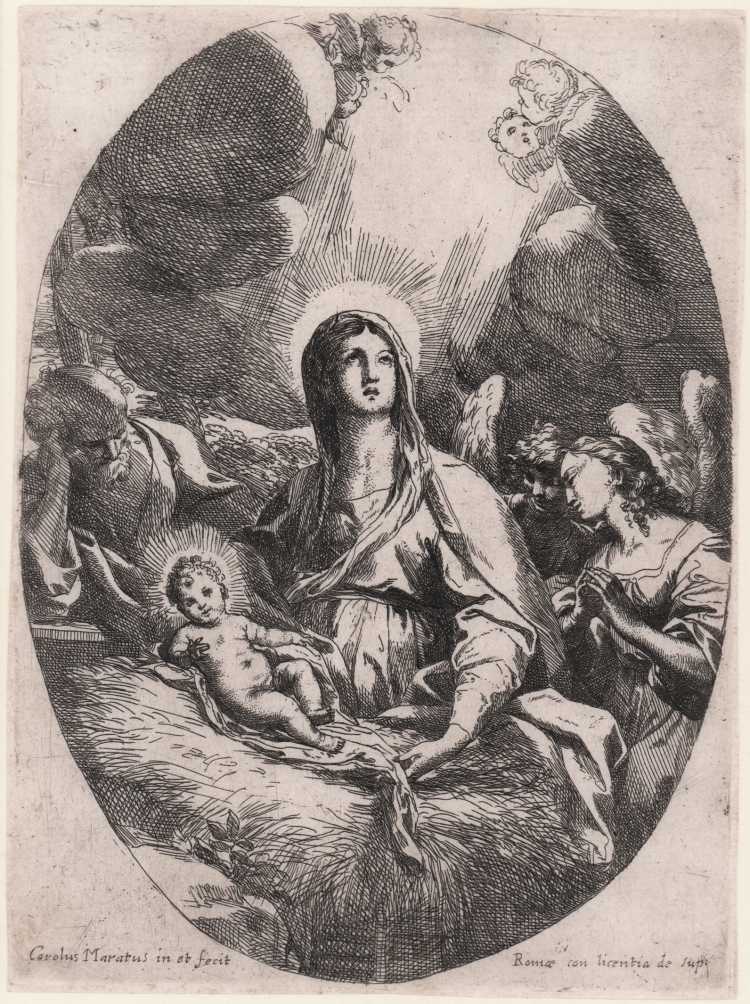




| Reference: | S20802 |
| Author | Carlo MARATTI |
| Year: | 1650 ca. |
| Measures: | 128 x 174 mm |



| Reference: | S20802 |
| Author | Carlo MARATTI |
| Year: | 1650 ca. |
| Measures: | 128 x 174 mm |
Etching, 1650 circa, signed on lower left plate.
Example in the second state of three, with the addition of the artist’s signature and before the edition published by Vincenzo Billy.
Splendid example, printed on contemporary laid paper, with thin margins, in excellent condition.
Maratti, a pupil of Andrea Sacchi, moved to Rome in 1650. His favourite subjects were those connected with the Virgin, to whom he was a votary, as Pascoli said. For that reason he was named Carluccio delle Madonne. His graphic production has been realized at the very beginning of his career, during the years he spent in the workshop of Sacchi, and before 1660. All his engravings have exist in more than one state: usually the first state is always without the artist’s signature, and therefore quite rare. We could then assume that the first examples were nothing but a proof, printed to be approved by the author, who afterwards printed also his name as a sign of consent.
|
Bartsch 4, TIB 004, Bellini 4 II/III. Dimensioni 128x174
|
Carlo MARATTI (Camerano 1625 – Roma 1713)
|
Italian painter, draughtsman and printmaker. He was the last major Italian artist of the classical tradition that had originated with Raphael, and his pre-eminence among the artists of his time marks the triumph of classicism. Nonetheless his art unites the virtues of disegno and colore, and he created a grandiose and decorative style that satisfied the demands of the Church. At the same time his late works had a grace and refinement that anticipated the development of the Rococo and Neo-classicism.
|
|
Bartsch 4, TIB 004, Bellini 4 II/III. Dimensioni 128x174
|
Carlo MARATTI (Camerano 1625 – Roma 1713)
|
Italian painter, draughtsman and printmaker. He was the last major Italian artist of the classical tradition that had originated with Raphael, and his pre-eminence among the artists of his time marks the triumph of classicism. Nonetheless his art unites the virtues of disegno and colore, and he created a grandiose and decorative style that satisfied the demands of the Church. At the same time his late works had a grace and refinement that anticipated the development of the Rococo and Neo-classicism.
|